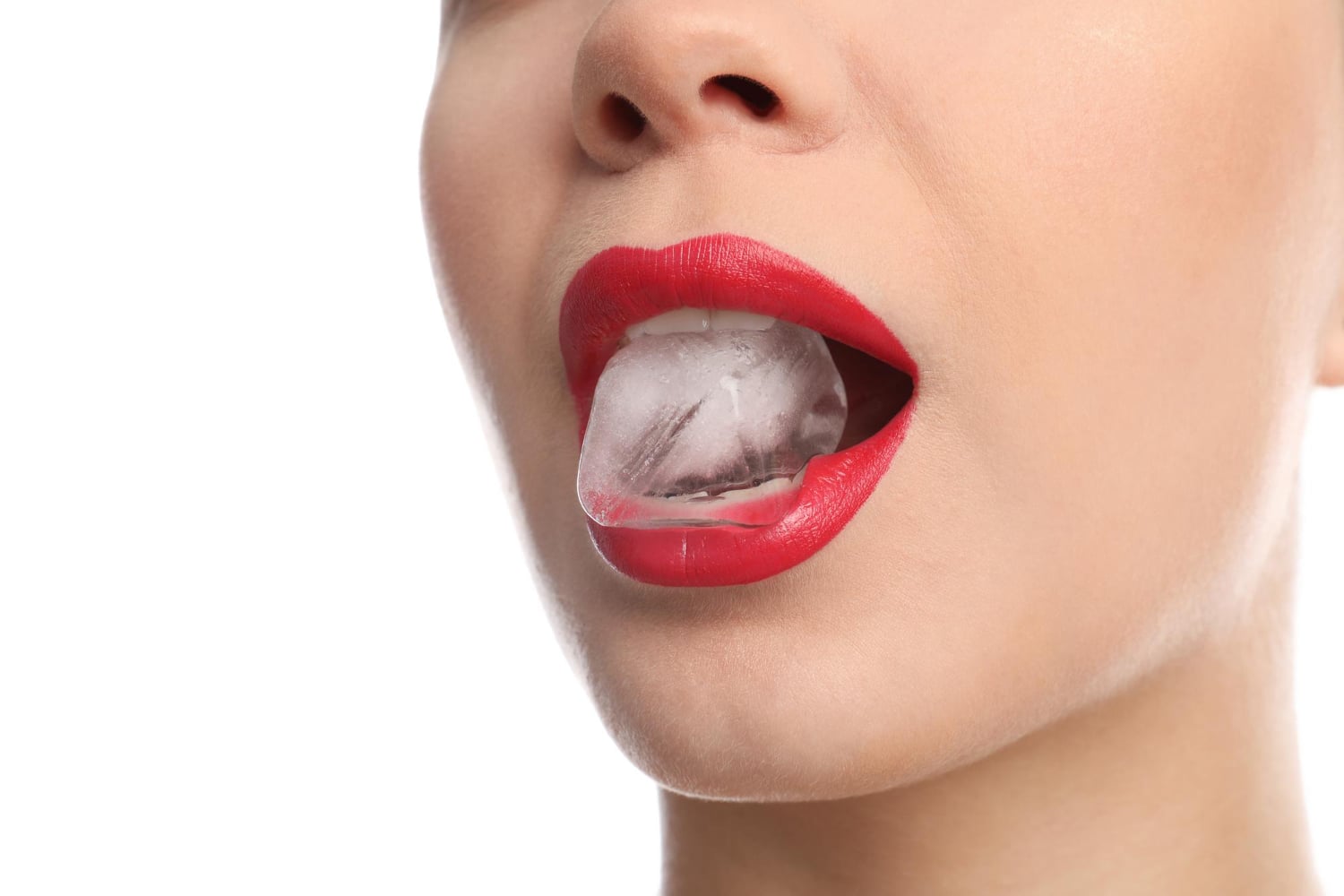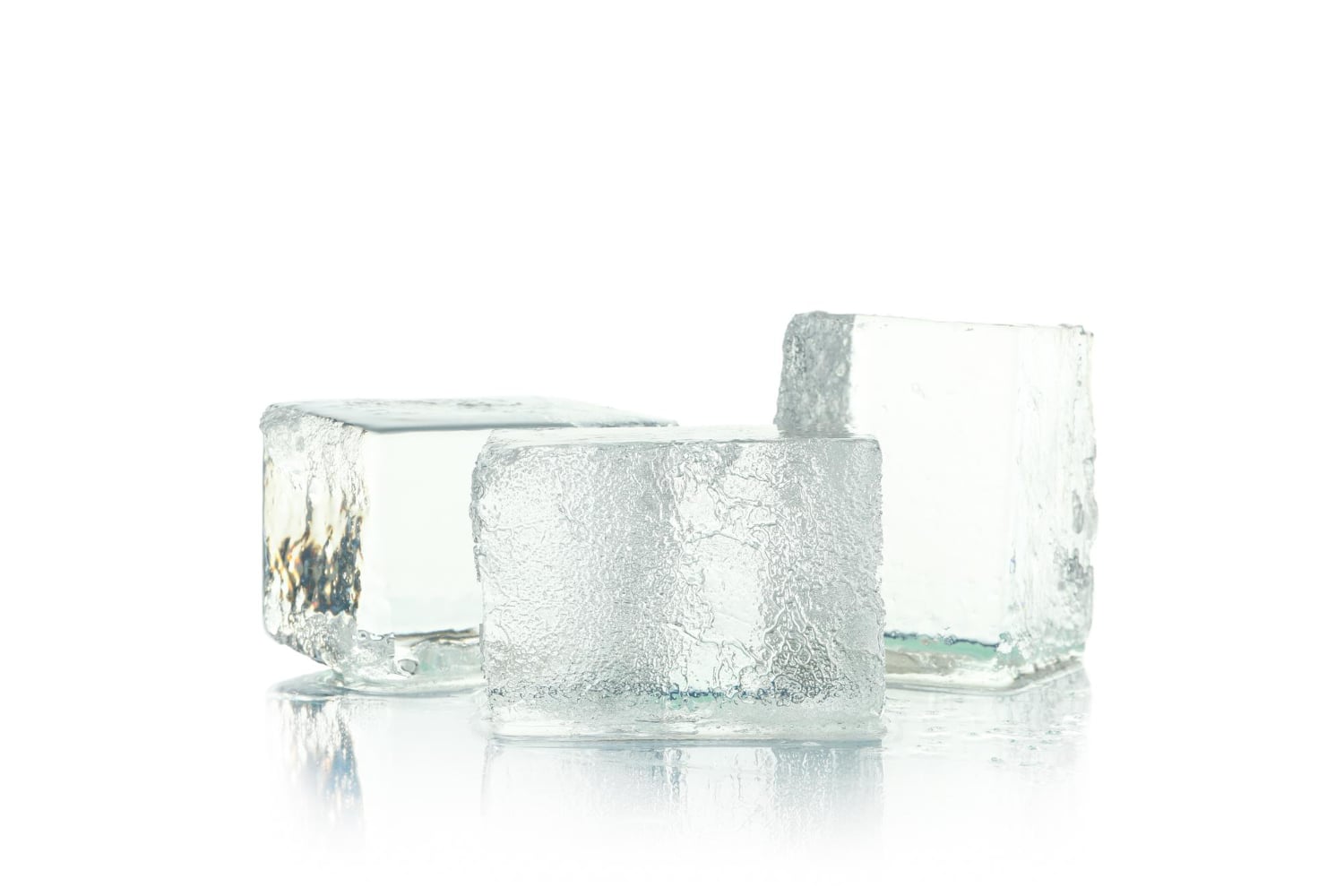The Top 4 Benefits of Adding Cold Immersion Therapy Into Your Wellness Routine


In the evolving world of wellness practices, cold immersion therapy stands out for its unique approach and surprising benefits.
This age-old practice, recently re-popularized, involves immersing the body in cold water, triggering a range of physiological responses.
With scientific studies backing its numerous benefits, cold immersion therapy is becoming a key component in many wellness routines.
This article delves into the top four benefits of incorporating this therapy into your wellness regimen, supported by research from reputable sources like PubMed and NCBI.
Understanding the Mechanism
Cold immersion therapy, often referred to as cryotherapy or cold water immersion (CWI), has gained significant attention in the sports and fitness world for its ability to enhance recovery after exercise. The process involves immersing the body in cold water, typically ranging from 10°C to 15°C, immediately following physical exertion. This practice triggers a physiological response known as vasoconstriction, where blood vessels constrict to conserve heat, subsequently reducing blood flow to extremities and muscle tissues.
The Science Behind the Benefits
The principle behind cold immersion therapy's effectiveness lies in its ability to reduce the inflammation and metabolic activity in the muscles post-exercise. When muscles are subjected to intense workout regimes, they undergo microtraumas, leading to inflammation and delayed onset muscle soreness (DOMS). By immersing the body in cold water, the therapy helps in minimizing these inflammatory responses.
Reducing Muscle Soreness and Inflammation
A cornerstone study published in the Journal of Sports Sciences (2009) reveals that CWI significantly reduces muscle soreness post-exercise compared to passive interventions or no intervention at all. The cold temperature helps in numbing nerve endings, providing an immediate analgesic effect. Additionally, the reduced blood flow to the muscles decreases inflammation, swelling, and the resultant pain.
Accelerating Lactic Acid Removal
Intense physical activity leads to the accumulation of lactic acid in the muscles, contributing to soreness and fatigue. Cold immersion therapy aids in more rapid removal of lactic acid from the muscles. A study from the British Journal of Sports Medicine (2010) supports this, showing that athletes who engaged in CWI had lower levels of lactic acid in subsequent performance tests.
Enhancing Muscle Recovery
The benefits of cold immersion therapy extend beyond the immediate reduction of soreness and inflammation. Regular use of CWI as part of a training program can lead to enhanced long-term muscle recovery. This is particularly beneficial for athletes who undergo frequent and intense training sessions, as it allows them to maintain a higher level of performance over time.
Practical Application and Guidelines
For optimal results, it is recommended to undergo cold immersion therapy immediately after exercise, for a duration of about 10-15 minutes. The ideal water temperature is typically between 10°C to 15°C, although individual preferences and tolerances may vary. It is crucial to ensure that the immersion is not excessively prolonged or the water too cold, as this can lead to counterproductive effects, such as increased muscle stiffness or hypothermia.
Considerations for Different Athletes
The application of cold immersion therapy can vary depending on the athlete’s sport and level of activity. Endurance athletes, like marathon runners or cyclists, may benefit from longer immersion times due to their prolonged muscle usage. In contrast, strength athletes, such as weightlifters, might opt for shorter durations to focus on specific muscle groups.
Incorporating CWI into a Holistic Recovery Plan
While CWI is effective, it should be part of a comprehensive recovery strategy that includes proper nutrition, hydration, and rest. Combining CWI with other recovery modalities, such as compression therapy, massage, or active recovery techniques, can further enhance its benefits.
Research and Future Directions
Ongoing research continues to shed light on the intricacies of how cold immersion therapy aids in exercise recovery. Studies are exploring the exact mechanisms behind its anti-inflammatory effects, the optimal timing and temperature for different types of exercises, and long-term impacts on muscle adaptation and performance enhancement.
Conclusion
In conclusion, cold immersion therapy emerges as a powerful tool in the arsenal of athletes and fitness enthusiasts for enhanced recovery post-exercise. Its ability to reduce muscle soreness, accelerate lactic acid removal, and promote overall muscle recovery makes it a valuable component of any serious training regimen. However, it's important to approach CWI with an understanding of its proper application and as part of a broader recovery plan. As research evolves, so will the strategies to maximize the benefits of this intriguing and effective recovery method.
Introduction to Cold Immersion and Immunity
Cold immersion therapy, a practice where individuals expose themselves to cold water or environments, has been increasingly recognized for its ability to boost the immune system. This section explores the scientific underpinnings of how regular cold exposure can enhance the body's immune response.
The Science of Cold Exposure and Immune Enhancement
Cold exposure triggers a cascade of physiological responses, many of which play a role in strengthening the immune system. One of the primary mechanisms is the stimulation of the sympathetic nervous system, which leads to the release of norepinephrine, a hormone and neurotransmitter that plays a crucial role in immune response modulation.
Increase in White Blood Cell Count
Studies, such as one published in the European Journal of Applied Physiology (2010), have demonstrated a significant increase in white blood cell count following regular cold water immersion. White blood cells, or leukocytes, are the body's primary defense against infectious diseases and foreign invaders. The increase in leukocytes post-cold exposure suggests an enhanced ability of the body to fight off infections.
Activation of the Immune System
Cold immersion stimulates the immune system by activating various components. The cold shock induces a stress response, which in turn activates the immune system. This activation leads to the production of more immune cells and anti-inflammatory cytokines, which are vital in fighting infections and reducing inflammation throughout the body.
Improved Lymphatic Circulation
The lymphatic system, a critical part of the immune system, benefits from cold immersion therapy. The contraction and dilation of blood vessels during and after cold exposure help to pump lymph fluid throughout the body more effectively. This enhances the removal of waste and toxins from the tissues, thus supporting the immune system's function.
Research Findings and Implications
Key studies have provided insights into how cold immersion affects immune function:
- A study published in the International Journal of Circumpolar Health (2004) showed that individuals who regularly engage in cold water swimming had a more robust immune response compared to those who did not.
- Research in the North American Journal of Medical Sciences (2015) suggested that cold exposure could help in reducing the incidence of respiratory tract infections.
- A 2021 study in the Journal of Immunology Research demonstrated that regular cold exposure could lead to a decrease in inflammation markers, suggesting an anti-inflammatory effect of cold immersion therapy.
Practical Application and Guidelines
For those interested in incorporating cold immersion therapy into their routine to boost immune function, it is recommended to start gradually. Begin with short exposures to cold water and gradually increase the duration as the body adapts. It is essential to listen to one's body and avoid overly prolonged exposure, which can lead to adverse effects.
Considerations for Different Populations
While cold immersion therapy can be beneficial for most individuals, certain populations should exercise caution. People with pre-existing heart conditions, severe hypertension, or immune disorders should consult with a healthcare professional before engaging in cold immersion therapy.
Combining Cold Immersion with Other Immune-Boosting Practices
To maximize the immune-boosting effects of cold immersion, it can be combined with other healthy practices such as regular exercise, a balanced diet rich in antioxidants, adequate sleep, and stress management techniques. This holistic approach can lead to a more robust and resilient immune system.
Future Directions and Ongoing Research
Ongoing research is delving deeper into understanding the molecular mechanisms behind cold immersion's impact on the immune system. Studies are exploring the long-term effects of regular cold exposure on immune system aging and its potential in managing autoimmune diseases.
Conclusion
In conclusion, cold immersion therapy presents a promising method for enhancing the immune system. Its ability to increase white blood cell count, activate the immune system, and improve lymphatic circulation underscores its potential as a natural and effective way to boost immunity. While the practice should be approached cautiously and as part of a holistic health regimen, its incorporation into regular wellness routines could significantly benefit immune health.
Introduction to Cold Immersion and Mental Health
Cold immersion therapy, a practice involving exposure to cold water or environments, has been increasingly recognized for its positive effects on mental health. This section explores the scientific findings that link regular cold exposure to improvements in mental well-being.
Understanding the Link Between Cold Exposure and Mental Health
The connection between cold immersion and mental health improvements is rooted in the body's physiological and biochemical responses to cold. This practice triggers the release of various neurochemicals and hormones that are beneficial for mental health.
Stimulation of the Vagus Nerve
One of the key mechanisms through which cold immersion benefits mental health is the stimulation of the vagus nerve. This nerve, part of the parasympathetic nervous system, plays a crucial role in regulating mood and stress responses. Cold exposure activates the vagus nerve, which can lead to a reduction in stress levels and an improvement in mood.
Release of Endorphins
Cold immersion triggers the release of endorphins, the body's natural painkillers and mood elevators. This release can lead to a feeling of euphoria, often referred to as the "swimmer's high." The endorphin release is associated with reduced symptoms of depression and anxiety, as it promotes a sense of well-being and relaxation.
Research Findings and Clinical Evidence
Several studies have highlighted the mental health benefits of cold immersion:
- A study in the Journal of Affective Disorders (2021) found significant reductions in symptoms of depression and anxiety in participants who engaged in regular cold water swimming.
- Research from the North American Journal of Medical Sciences (2015) suggested that cold exposure might positively affect mood and cognitive function, possibly due to increased neurochemical synthesis and improved neural efficiency.
Practical Application and Guidelines
To harness the mental health benefits of cold immersion, it's recommended to start gradually. Individuals can begin with brief exposures to cold showers and progressively move to longer or colder immersions as tolerated. It's important to listen to one's body and mind, ensuring that the practice remains comfortable and beneficial.
Considerations for Different Individuals
While cold immersion therapy can offer mental health benefits, it may not be suitable for everyone. Individuals with certain mental health conditions, such as severe depression or anxiety disorders, should consult with a mental health professional before starting cold immersion therapy.
Combining Cold Immersion with Other Mental Health Practices
Cold immersion can be most effective when integrated into a broader mental health care strategy. This can include regular exercise, mindfulness practices, therapy, and maintaining a balanced lifestyle. Such a holistic approach can maximize the mental health benefits and provide a more comprehensive support system for individuals.
Future Directions and Ongoing Research
Ongoing research in the field of psychoneuroimmunology is exploring the deeper connections between cold immersion, the immune system, and mental health. Studies are investigating the long-term effects of regular cold exposure on brain health, stress resilience, and emotional well-being.
Conclusion
In summary, cold immersion therapy offers a unique and natural way to enhance mental health. Its ability to stimulate the vagus nerve, release endorphins, and reduce symptoms of depression and anxiety makes it a valuable practice for those looking to improve their mental well-being. As with any wellness practice, it should be approached mindfully and integrated into a broader mental health strategy for the best results.
Introduction to Cold Immersion and Its Impact on Circulation and Metabolism
Cold immersion therapy, involving exposure to cold water or environments, is increasingly recognized for its ability to enhance circulation and boost metabolism. This section delves into the scientific basis of these benefits, shedding light on how cold immersion can be a valuable addition to a wellness routine.
Understanding the Physiological Response to Cold
The body's response to cold immersion is complex and involves various physiological processes. When exposed to cold, the body works to maintain its core temperature, a response that can lead to improved blood circulation and an increase in metabolic rate.
Enhanced Blood Circulation
The primary response to cold exposure is the constriction of peripheral blood vessels, a process known as vasoconstriction. This response reduces blood flow to the skin and extremities, redirecting it to vital organs. Following the initial cold exposure, blood vessels then dilate, a process known as vasodilation. This alternating constriction and dilation improve overall blood circulation, enhancing the delivery of oxygen and nutrients to tissues and aiding in the removal of waste products.
Metabolic Rate Increase
Exposure to cold environments stimulates the body's metabolic processes as it works to generate heat and maintain a stable internal temperature. This increase in metabolic rate can lead to higher energy expenditure, which has been associated with weight management and even weight loss in some cases.
Research Findings and Clinical Evidence
Several studies have provided insights into the effects of cold immersion on circulation and metabolism:
- A study in the Journal of Physiology (1980) demonstrated that cold exposure leads to an increase in metabolic rate, as the body burns more calories to produce heat.
- Research published in the International Journal of Sports Medicine (2010) highlighted improved blood circulation post-cold immersion, with participants showing enhanced blood flow and oxygen delivery to muscles.
Practical Application and Guidelines
To benefit from the circulation and metabolism-boosting effects of cold immersion, it's advisable to start with short exposures and gradually increase the duration and intensity. Cold showers or baths, ice baths, or natural cold-water swimming are effective ways to practice cold immersion.
Considerations for Different Groups
While cold immersion can be beneficial, it's not suitable for everyone. Individuals with cardiovascular issues, hypertension, or other health concerns should consult with a healthcare professional before starting cold immersion therapy. It's also important for elderly individuals and those with reduced circulation to approach cold immersion cautiously.
Combining Cold Immersion with Other Health Practices
For maximum benefits, cold immersion can be combined with other healthful practices, such as regular physical exercise, a balanced diet, and stress-reducing activities like yoga or meditation. This holistic approach can enhance the effects on circulation and metabolism, contributing to overall health and wellness.
Future Directions and Ongoing Research
Ongoing research in the field of thermoregulation and metabolism is exploring the long-term effects of regular cold immersion on metabolic diseases, cardiovascular health, and weight management. Studies are also examining the potential role of cold immersion in improving circulation in individuals with vascular disorders.
Conclusion
In conclusion, cold immersion therapy offers significant benefits in terms of increased circulation and metabolic rate. Its ability to enhance blood flow, oxygen delivery to tissues, and calorie expenditure makes it a valuable practice for those looking to improve their physical health and wellness. As with any health practice, it's important to approach cold immersion mindfully and integrate it into a comprehensive health and wellness plan.
Conclusion

In summary, the integration of cold immersion therapy into a wellness routine offers a multitude of benefits, supported by both historical practices and modern scientific research.
From enhancing recovery post-exercise to boosting the immune system, improving mental health, and increasing circulation and metabolism, cold immersion presents itself as a multifaceted tool for health and wellness.
The effectiveness of cold immersion therapy in speeding up exercise recovery is particularly significant for athletes and fitness enthusiasts.
It enables quicker recuperation, reduced muscle soreness, and enhanced readiness for subsequent training sessions.
Additionally, the immune-boosting properties, characterized by an increase in white blood cell count and improved lymphatic function, make cold immersion a compelling practice for enhancing overall health.
Mental health benefits, including the reduction of symptoms related to depression and anxiety, position cold immersion therapy as a unique and natural approach to emotional well-being.

Furthermore, the stimulation of circulation and a boost in metabolic rates open up avenues for those seeking natural methods for weight management and improved cardiovascular health.
As we continue to explore and understand the depths of our body's response to environmental stressors like cold, the importance of integrating practices like cold immersion into our regular health routines becomes increasingly clear.
It's a testament to the power of combining traditional wisdom with contemporary scientific insights for holistic health and wellness.
However, as with any health practice, it's crucial to approach cold immersion therapy mindfully, considering individual health conditions and consulting healthcare professionals as needed.
This balance of caution and curiosity will ensure that the benefits of cold immersion therapy can be safely and effectively harnessed in our quest for optimal health.
Used sources
- https://pubmed.ncbi.nlm.nih.gov/18382932/
- https://pubmed.ncbi.nlm.nih.gov/20942569/
- https://pubmed.ncbi.nlm.nih.gov/20524715/
- https://pubmed.ncbi.nlm.nih.gov/33120891/
- https://pubmed.ncbi.nlm.nih.gov/26581833/
- https://pubmed.ncbi.nlm.nih.gov/33493991/
- https://pubmed.ncbi.nlm.nih.gov/27704555/
- https://pubmed.ncbi.nlm.nih.gov/19444973/
- https://pubmed.ncbi.nlm.nih.gov/27403980/
- https://pubmed.ncbi.nlm.nih.gov/12208913/
- https://pubmed.ncbi.nlm.nih.gov/32581890/
- https://pubmed.ncbi.nlm.nih.gov/17993252/
- https://pubmed.ncbi.nlm.nih.gov/34655758/
- https://pubmed.ncbi.nlm.nih.gov/911386/
- https://pubmed.ncbi.nlm.nih.gov/6131011/
- https://www.ncbi.nlm.nih.gov/pmc/articles/PMC8047510/
- https://pubmed.ncbi.nlm.nih.gov/19270035/
- https://www.ncbi.nlm.nih.gov/pmc/articles/PMC6334714/
- https://pubmed.ncbi.nlm.nih.gov/21941017/

